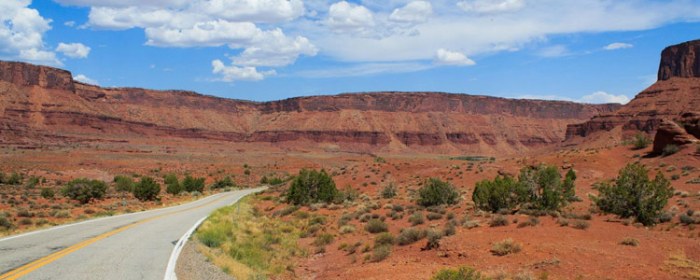Arizona’s unique climate and landscape present distinct challenges and considerations for homeowners seeking adequate insurance protection. Understanding the nuances of the Arizona home insurance market is crucial for securing the right coverage at a competitive price. This guide delves into the key factors influencing premiums, explores various coverage options, and provides practical advice for finding and choosing the best insurance provider for your specific needs.
From the impact of location and home features on insurance costs to the importance of understanding policy details and filing claims effectively, we aim to equip Arizona homeowners with the knowledge necessary to make informed decisions about protecting their most valuable asset. We’ll also explore how to mitigate risks and minimize potential insurance expenses through preventative measures and smart choices.
Protecting Your Arizona Home from Hazards

Arizona’s unique climate and geography expose homeowners to a variety of natural hazards. Understanding these risks and implementing preventative measures is crucial for protecting your property and minimizing potential insurance claims. This section details common hazards, preventative actions, and home modifications that can enhance your home’s resilience and potentially lower your insurance premiums.
Common Arizona Natural Hazards Affecting Home Insurance
Arizona homeowners face significant risks from wildfires, extreme heat, monsoonal rains and flooding, and occasionally, earthquakes. Wildfires, fueled by dry conditions and strong winds, pose a severe threat, particularly in areas with brush and desert vegetation. Extreme heat can damage roofing materials and increase energy costs, while monsoonal rains often lead to flash floods and water damage. Though less frequent, seismic activity can also cause structural damage. These hazards significantly impact insurance premiums, with high-risk areas facing substantially higher costs.
Preventative Measures to Reduce Risk
Several proactive steps can significantly reduce your home’s vulnerability to these hazards. Creating defensible space around your home by clearing brush and vegetation within a certain radius is crucial for wildfire prevention. Regular roof inspections and maintenance, including cleaning debris and addressing any damage promptly, are vital for mitigating heat damage and preventing leaks during monsoons. Installing proper drainage systems around your foundation can help divert water and prevent flooding. Earthquake preparedness involves securing heavy objects and reinforcing vulnerable areas of the house.
Home Modifications to Lower Insurance Premiums
Investing in certain home modifications can demonstrably lower your insurance premiums. Installing impact-resistant windows and doors can reduce damage from wind and hail associated with monsoons. Upgrading to a fire-resistant roof can significantly lower your wildfire risk and associated insurance costs. Implementing a sprinkler system designed for wildfire suppression is another significant protective measure. These modifications not only protect your home but also demonstrate to insurers your commitment to risk mitigation. For example, a homeowner who upgraded to a Class A fire-resistant roof saw a 15% reduction in their annual premium.
The Role of Home Maintenance in Preventing Insurance Claims
Regular home maintenance is paramount in preventing costly insurance claims. This includes routine inspections of your roof, plumbing, electrical systems, and HVAC equipment. Addressing issues promptly prevents small problems from escalating into major, expensive repairs. Regular gutter cleaning prevents water damage and foundation issues. Properly maintaining your landscaping, including trimming trees and shrubs near your house, reduces the risk of fire damage. A well-maintained home is less likely to experience damage from natural hazards, resulting in fewer insurance claims.
Creating a Comprehensive Home Inventory
Maintaining a detailed home inventory is essential for efficient claims processing. In the event of damage or loss, a comprehensive inventory significantly speeds up the claims process and ensures you receive appropriate compensation. Your inventory should include:
- A detailed description of each item, including make, model, and serial number (if applicable).
- Purchase dates and receipts or proof of ownership.
- Photographs or videos of each item, ideally from multiple angles.
- An appraisal for valuable items such as jewelry or artwork.
- A designated, secure location for storing your inventory (e.g., a fireproof safe or cloud storage).
Consider using software or apps specifically designed for creating and managing home inventories. This organized approach will greatly assist in the event of an insurance claim.
Concluding Remarks

Securing adequate Arizona home insurance involves a careful assessment of your individual needs and a thorough understanding of the market. By considering the factors influencing premiums, comparing coverage options, and engaging proactively with insurance providers, Arizona homeowners can confidently protect their homes and their financial well-being. Remember to regularly review your policy and make adjustments as needed to ensure ongoing protection against the unique risks of the Arizona environment.
Frequently Asked Questions
What is the average cost of home insurance in Arizona?
The average cost varies greatly depending on factors like location, home value, coverage level, and the homeowner’s risk profile. It’s best to obtain quotes from multiple insurers for an accurate estimate.
What are some common exclusions in Arizona home insurance policies?
Common exclusions often include flood damage, earthquake damage, and certain types of insect infestations. These are typically covered by separate, supplemental policies.
How can I lower my Arizona home insurance premiums?
Consider installing security systems, upgrading your home’s features to improve safety and fire resistance, maintaining a good credit score, and bundling your home and auto insurance.
What should I do if I need to file a claim?
Contact your insurance provider immediately to report the incident. Follow their instructions carefully and gather all necessary documentation to support your claim.
What is the role of the Arizona Department of Insurance?
The Arizona Department of Insurance regulates the insurance industry in the state, protects consumers’ rights, and investigates complaints against insurers.